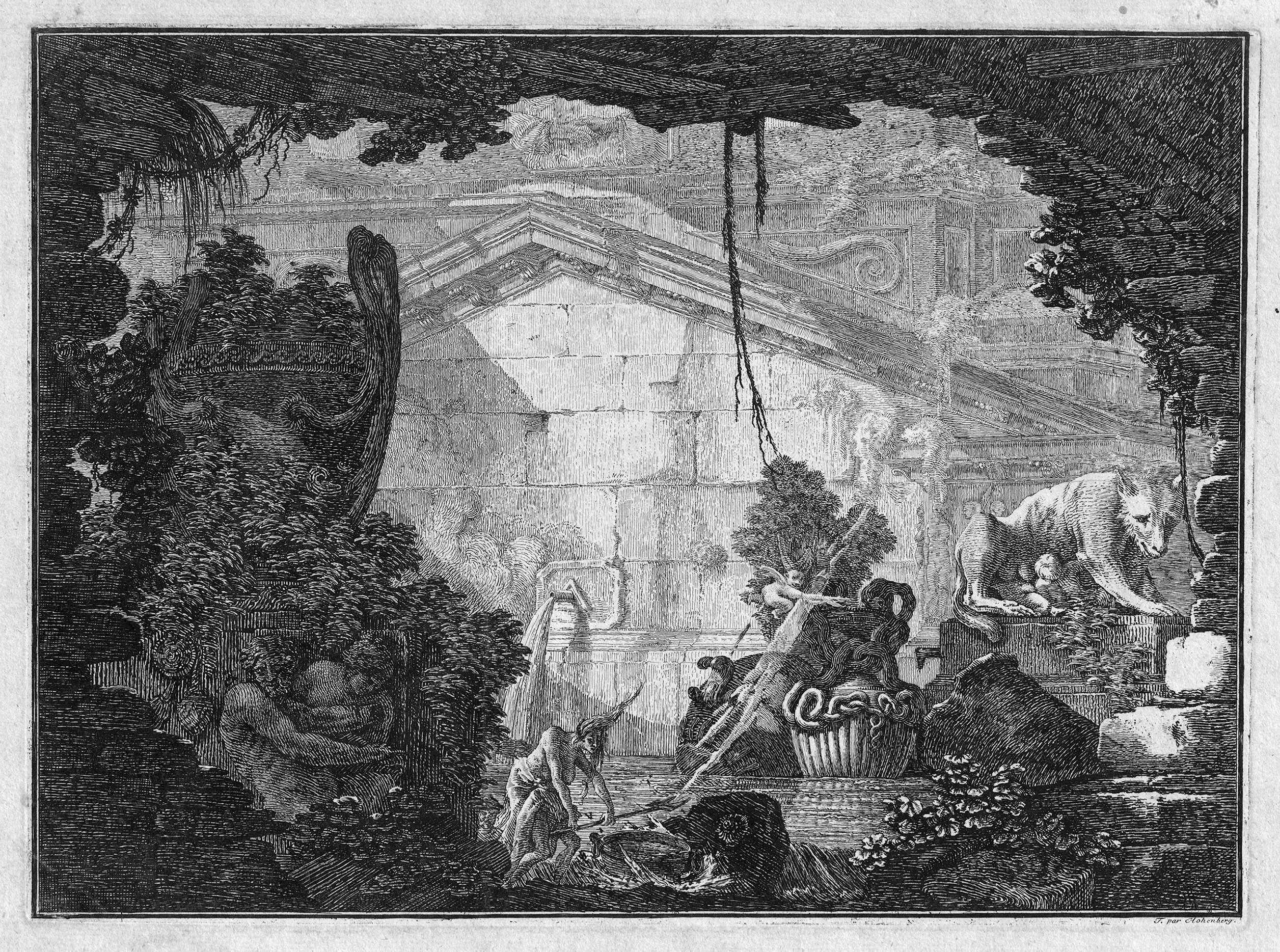Loading the page ...
Johann Ferdinand Hetzendorf von Hohenberg
(1732–1816, Vienna)
An Architectural Capriccio with Bizarre Figures. Etching. 26.1 x 35.6 cm. Hainisch, 49, 3.
Johann Ferdinand Hetzendorf, a Viennese-born architect and theatrical painter, studied architecture and architectural painting at the city’s academy and subsequently undertook study trips to Germany and Italy. In the initial stages of his career he worked mostly as a scene and theatrical painter. Entrusted later with an increasing number of important commissions, Hetzendorf was named imperial court architect in 1775. Honorary appointments came his way at an early stage. He was made an honorary member of the Imperial Academy in Augsburg in 1758, elevated to the imperial peerage in 1766 and given the noble title of von Hohenberg. By 1770 at the latest he was professor of architecture at the Vienna Academy and from 1772 to 1816 headed its department of architecture. A further indication of Hetzendorf’s reputation was his appointment as the first German-speaking member of the Académie de France in Rome in 1773.
His principal architectural works include the striking Gloriette or ‘temple of renown’ in the gardens of Schönbrunn Palace, a work he completed in 1775, and the Roman Ruins he also installed there in 1778, which were modelled on the temple built for the Roman Emperor Vespasian by his son Titus. Idiosyncratic by nature, Hetzendorf gave free rein to his vivid imagination both in this design and in similar grottos and artificial ruins. In iconographical terms the present extremely rare etching is closely related to the architectural ensemble of the Roman Ruins. In both there is a symbiosis between ancient architectural ruins and a pool or body of water in which the latter serves as an allegory of sunken Roman civilisation.
A broad opening in the weathered masonry directs the viewer’s gaze to the pediment of an ancient well. In front of the gable wall a pond has formed, rising up out of which are stone vases and fragments of architecture. In the left foreground stands a garden vase overgrown with weeds and scrub together with the remains of an ancient relief. On the right this enigmatic, evocative scene is enlivened by a stone sculpture of the lupa romana, the Roman she-wolf suckling Romulus and Remus.
A further picturesque element is the half-naked figure of a witch-like woman with windblown hair and a trident standing on the edge of the pond; a winged devil flits hurriedly away through the air. These two staffage figures give a romantic, surrealistic touch to the composition, the artistic leitmotif of which is that of vanitas. Piranesi’s influence on Hetzendorf’s imagery is readily apparent here. He was probably inspired by the series of etchings entitled Grotteschi which Piranesi produced between 1747 and 1749.
A preliminary drawing for the etching of almost exactly the same size is in the Metropolitan Museum in New York (acc. number 2004.317). When the artist came to make a print of his design he kept very closely to the preliminary drawing – with one notable difference. The two bizarre staffage figures, which make the mood of the etching so sombre and secretive, are missing in the modello drawing. Taking their place is a conventional group of staffage figures consisting of a man with a trident talking to a woman sat with her child. A superb impression with even margins. Minor staining and surface soiling, minor defects, occasional remains of old hinges on the verso, otherwise in excellent condition. Literature: Erwin Hainisch, “Der Architekt Johann Ferdinand Hetzendorf von Hohenberg”, in: Wiener Jahrbuch für Kunstgeschichte, 1949, pp.19–90, fig. plate XIV, 2.
